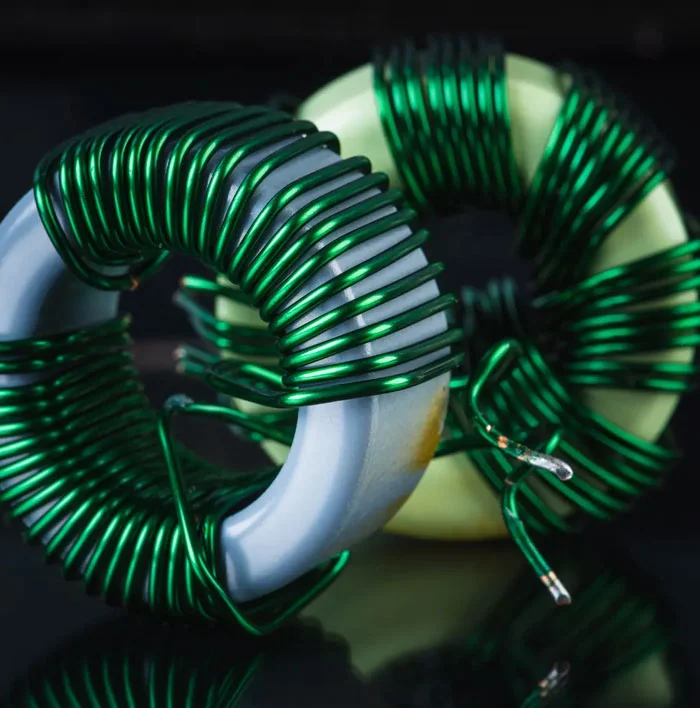Optimizing High-Frequency Core Loss Measurements with Bifilar Winding Technique

Accurate measurement of magnetic core losses is paramount in electrical engineering, particularly in the analysis and design of inductors and transformers for high-frequency applications. Bifilar winding on toroid cores is a critical technique that enhances the precision of these measurements. It is beneficial to high-frequency magnetic core loss measurements.
Understanding Bifilar Winding
Bifilar winding involves wrapping two wires around a toroid core, ensuring that each turn of the wire lies parallel and close to the other. This technique is not just a mere practice but a strategic approach to tackle two significant challenges in core loss measurements: ensuring an accurate 1:1 turn ratio and minimizing the effects of inter-winding capacitance.
- Ensuring a 1:1 Turn Ratio:
- Guarantees equal number of turns for windings
- Essential for comparing induced voltages accurately
- Direct impact on measurement precision and reliability
- Minimizing Inter-winding Capacitance:
- Reduces space between windings, lowering capacitance
- Crucial for high-frequency measurements where capacitance effects are pronounced
- Helps in avoiding phase shifts and resonances that can distort measurements
The Importance of Accurate Turn Ratios
The accuracy of the turn ratio in a winding setup directly influences the reliability of core loss measurements. A precise 1:1 turn ratio ensures that the magnetic field applied and the response measured are proportionally accurate. Deviations may cause significant errors in calculating core losses, affecting the overall efficiency and performance of power electronic devices. The bifilar winding technique, by its nature, ensures this precision, thereby enhancing the measurement accuracy of high-frequency magnetic cores.
Tackling the Challenges of High-Frequency Measurements
High-frequency applications pose unique challenges for magnetic core loss measurements. One such challenge is the effect of inter-winding capacitance, which becomes increasingly significant at higher frequencies. This capacitance can introduce undesirable phase shifts and resonances, leading to distorted measurements. The bifilar winding technique effectively addresses this issue by:
- Keeping windings closely packed to reduce capacitance
- Ensuring a cleaner and more accurate measurement environment
- Enhancing the reliability of core loss data critical for optimizing device performance
Benefits of Bifilar Winding in Core Loss Measurement
Adopting the bifilar winding technique in core loss measurements brings several benefits, making it a preferred method for engineers and researchers:
- Increased Measurement Accuracy: By ensuring a precise turn ratio and minimizing capacitance effects, bifilar winding leads to more accurate and dependable core loss measurements.
- Improved Device Efficiency: Accurate core loss data is crucial for designing more efficient power electronic devices. Bifilar winding provides reliable measurements, helping to optimize device performance.
- Enhanced Research and Development: Material scientists and engineers must accurately measure core losses to develop new materials and designs. The bifilar winding technique aids in this exploratory process by ensuring measurement integrity.
The bifilar winding technique is a cornerstone in accurately measuring high-frequency magnetic core losses. Its ability to ensure a precise 1:1 turn ratio and minimize the effects of inter-winding capacitance makes it indispensable in electrical engineering. As we push the boundaries of power electronics into higher frequencies, adopting meticulous measurement methods like bifilar winding becomes increasingly important. This technique enhances the accuracy of core loss measurements and contributes to the development of more efficient and reliable power electronic devices.